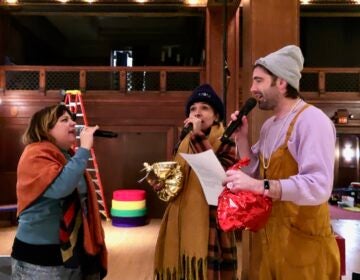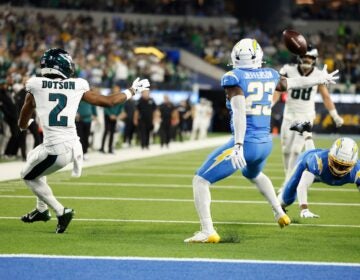Striking photos of turbulent times in Philly history on display [photos]
The Philadelphia History Museum at the Atwater Kent is featuring an exhibition of street photography from the 1970s and ’80s, showing the grit of the city in turmoil.
The photos are from the collection of a single, hardworking, freelance photojournalist, Neil Benson, who for more than 30 years shot daily news events in Philadelphia. He filed for anyone who would pay him — from the New York Times, to Philadelphia Magazine, to the city’s underground press including the now-defunct Drummer weekly newspaper.
“Nobody asked me to get a Pulitzer Prize every assignment, just get a very good horizontal and a very good vertical so they could do the layout,” said Benson. “I was taught early on to make uncroppable images. If you have to zoom in, you weren’t close enough. Editors yelled and screamed at me, ‘I can’t crop your work.'”
Benson cut his teeth at the Temple University newspaper where he learned to pack his images with content edge-to-edge so editors could not be tamper with them. He went on to capture striking pictures: Mayor Frank Rizzo entertaining the Queen of England; Phillies third-baseman Mike Schmidt cradling a baseball bat in a fetal position in the infield; and a girl at the corner of 29th and Tasker whacking the leather off a baseball.
He specialized in crowd work, particularly demonstrations. They were exciting and revolutionary. Benson always saw himself more as a propagandist than a journalist.
“Something I never gave any credence to was the myth of objectivity,” said Benson. “The writers — even at the Drummer — pretended to be objective because journalism, by definition, is supposed to be non-biased. Photography, on the other hand, makes no such claim.”
An image of demonstrators, protesting the closing of Philadelphia General Hospital in 1977, shows an ocean of people carrying signs with an American flag in the foreground. Benson got that shot by hanging out of a third-story window at City Hall.
The mantra for photojournalists, he said, was “f8, and be there.” With an f8 aperture setting, the depth of field is generous enough to get everything in focus, so the photographer can move quickly through a rushing situation.
“The majority of my career was shot with a 28-mm lens — the widest lens you can use without turning people’s heads to mush,” said Benson. “The industry’s normal lens is 50 mm, which was designed to take portraits. But if you’re going take environmental portraits — people doing what they are doing — a 28-mm lens puts you within arm’s length of your subject. In terms of a riot, it gets interesting.”
Benson no longer takes pictures professionally. As a founding member of the artist collective, the Dumpster Divers, he now focuses on making artwork out of trash. He donated his archive to the history museum because it takes up too much space in his home.
“The Benson collection — as they call it — lives better than I do,” said Benson. “It’s in an air-conditioned, humidity-controlled room in acid-free boxes. I wish I lived like that.”
WHYY is your source for fact-based, in-depth journalism and information. As a nonprofit organization, we rely on financial support from readers like you. Please give today.












